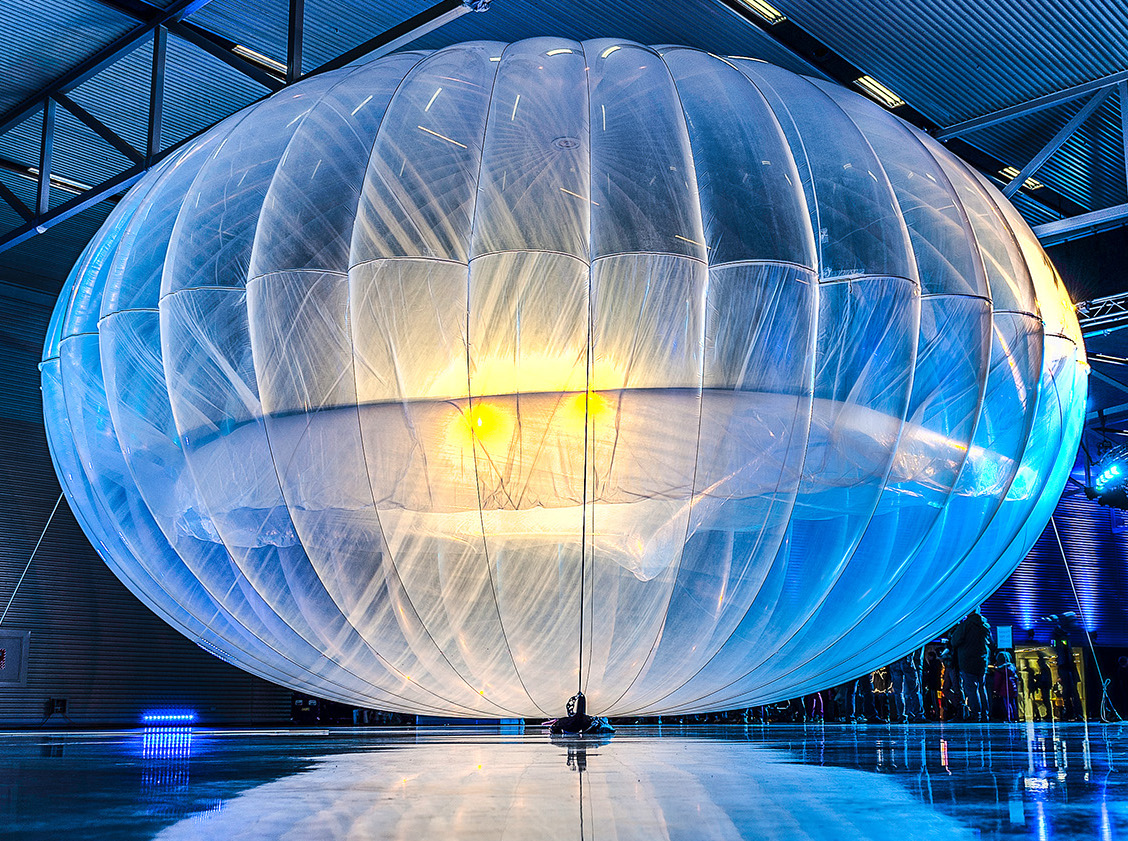Pitch Your Capability Topic Week
By Mark Howard
Coordinating distributed maritime operations, particularly in a peer-on-peer conflict, will likely prove to be a challenging problem. The environment will be heavily contested and command systems will be stressed. In particular, the communication and ISR network must be functionally reliable and resilient. Maintaining a high level of situational awareness will be critical in all aspects of operations, from the initial deployment of forces to the concentration of firepower onto targets. The C4ISR of both sides will include everything from over-the-horizon radar to subsurface listening and space based orbital assets, all of which will combine to make the surveillance grid more transparent. But sustaining the bandwidth required for communications over wide areas, especially in light of adversary jammers and the long distances between theater commanders, will be a serious operational challenge.1
The U.S. Navy efforts at electromagnetic maneuver warfare is working towards a future where there may only be a few transmitters in a battlespace while the remaining forces are all on receive.2 These efforts are beginning to leave the laboratory and work their way into the fleet, but much work remains to be done. To overcome these challenges, significant resources are being spent on improving low earth orbit (LEO) capabilities and UAV relays that are resistant to jamming. These efforts amount to building a mesh network, a network where each node connects directly and non-hierarchically to one another.3 These nodes are capable of self-forming, self-healing, and self-organizing.4 Mesh networks offer a more resilient and risk-worthy type of network that can better fulfill the needs of warfighters in a contested environment.
These emerging mesh networks, which feature a heavy reliance on space-based assets and UAVs, should be augmented by stratospheric balloons. These near-space platforms operate well above typical aircraft, but well below LEO satellites, challenging the conventional counters for high-altitude and space-based sensors. By offering a strong combination of high endurance, low cost, small footprints, and modular payloads, stratospheric balloons are poised to make major contributions to mesh networking in the battlespace.
Balloon Capabilities and Considerations
Balloon coverage is especially broad given the platform’s ability to reach high altitudes, such as covering a space over 600 miles in diameter for a balloon at 65,000 feet. The ability to operate lower than satellites enables these platforms to resolve features at lower power and at longer ranges. Considering a point at nadir, near-space balloon platforms are 10-20 times closer to their targets than a typical 400 kilometer-high LEO satellite.5 This distance differential implies that optics on near-space platforms can be much smaller to achieve similar performance, and clearly the cost of launching the capability is far less than rocket-assisted orbital deployments.

Notwithstanding recent balloon shootdowns that made the news, near-space platforms are quite survivable, and their low-cost, unmanned nature makes them relatively risk-worthy. Lockheed-Martin reviewed balloons in a briefing called “Preliminary Study: High Altitude Airship Survivability and Vulnerability,”6 and concluded they have extremely small radar and thermal signatures that make them especially challenging to most traditional tracking and targeting methods. Estimates of their radar cross section were on the order of hundredths of a square meter. Considering how expansive their operating areas could be in terms of area and altitude, just finding balloons would be a challenge, let alone prosecuting a high-altitude engagement to conclusion.
Space-based assets are so heavily demanded that they have historically been difficult for tactical commanders to task. Whatever mission a local commander may need performed, there always seems to be a long line of higher-priority, strategic missions required by other commands and higher-echelon authorities. Near-space balloons would not necessarily fall under these same authorities, and could be more available battlefield assets that fall under the direct control of tactical and local-level commanders. These commanders will have many requirements of their own, but the two highest needs are likely to be persistent over-the-horizon communications and ISR capabilities. By operating many of these lost-cost platforms across wide areas, tactical commanders can have many of their information needs met.
Likely the best-known commercial balloon effort is Google’s Project Loon. This project started in 2011 with the goal of providing internet service to areas without reliable internet via a mesh network of internet balloons. When the project ended in 2021, virtually all of the technical challenges the team faced had been solved and the project successfully connected hundreds of thousands of users with networks of floating cell phone towers operating in the stratosphere. The project’s end was mainly due to financial concerns, for as the team lead wrote, “the road to commercial viability has proven much longer and riskier than hoped.” Regardless of business feasibility, technical feasibility was no longer a major concern.7 From a technical standpoint, the team accomplished many things that were previously thought impossible, such as precisely navigating balloons in the stratosphere, creating an operable mesh network in the sky, and developing balloons that can withstand the harsh conditions of the stratosphere for close to a year.

One of the strongest capabilities offered to the local commander will be a persistent platform that can maintain an operational station for months at a time, and perhaps even longer. By the time Project Loon concluded, they had achieved an average flight duration of 161 days. Additionally, near-space assets are payload agnostic and are highly modular. They can be used as either communication relays or ISR platforms featuring a wide variety of sensors and transmitters. While the balloons used by Project Loon were limited to about 260 kilograms of payload, the follow-on airships Project Loon was planning on using would have been capable of lifting upwards of 1,875 kilograms. Propulsion capabilities of the balloons used were around one meter per second, but the plan was to increase that to around 7.8 meters per second, enabling the platform to better maintain station or more quickly reposition to a new area of interest.
The more platforms, or nodes, in the air, the more robust and far-reaching the mesh network. Project Loon demonstrated the ability to maintain a point-to-point mesh network in 2020 of 3,500 kilometers in length. This long reach required 33 balloons, but with a greater payload, such as the airship Loon was developing, the hope was to reduce the number of nodes required by more than half. Airborne tests demonstrated an ability to maintain a 1,000-kilometer backhaul link with only seven balloon nodes. Further testing demonstrated an ability to link two assets over 600 kilometers. Primary communication links were by radio, but Loon had started to experiment with optics that transmit large data loads via light beams. This Loon sub-project was not canceled by Google and lives on today as Project Taara.8 By combining light beam data transmission with a wide presence of connected balloons, warfighters can move large amounts of data throughout the battlespace using jam-resistant, low-signature methods.
The DOD is already deploying the SkySat radio repeater, and expanding the balloon platform to include ISR capabilities, but these applications appear limited to ground operations.9 This system extends the standard two-way radio link from 10 miles to 500 miles and has been used by the Marine Corps in forward areas. As a starting point, the Navy can leverage these existing systems to explore the possibilities for future navalized balloon capability.

Conclusion
When discussing near-space assets, some have mentioned the “giggle factor” whenever anyone brings up the idea of using balloons for military objectives. Any objective review of stratospheric balloon capabilities would quickly see how robust these platforms are and their great potential for military applications. Traditional conceptions of what military capability “ought” to look like must give way to more nuanced visions of what is possible amidst the evolving technological landscape. In the case of stratospheric balloons, the capability is already quite mature and ripe for exploitation.
Mark Howard is a retired Navy Commander who spent his time as an electronic countermeasures officer and is a graduate of the Naval War College.
Endnotes
1. Clark, Bryan and Walton, Timothy; Taking Back the Seas Transforming the U.S. Surface Fleet for Decision-Centric Warfare, Published by CSBA 2019.
2. Article published by NAVSEA accessed June 2, 2023: https://www.navsea.navy.mil/DesktopModules/ArticleCS/Print.aspx?PortalId=103&ModuleId=127458&Article=1361428.
3. Lundquist, Edward, Tactical Sea-Air-Shore Communications – Network Effectiveness and Survivability needs more nodes, Published by Mönch Verlagsgesellschaft mbH, Naval Forces III-IV/2020, Page 40.
4. Bordetsky, Alexander; Benson,Stephen; and Hughes, Wayne, Mesh Networks in Littoral Operations, Published by US Naval Institute Blog, May 12, 2016.
5. Tomme, Edward, The Paradigm Shift to Effects-Based Space: Near-Space as a Combat Space Effects Enabler, Research Paper No. 2005-01 (Maxwell AFB, AL: Air University, 2005), available at <https://apps. dtic.mil/sti/pdfs/ADA434352.pdf>.
6. ibid.
7. Project Loon records published by Google, accessed Jun 2, 2023, <https://x.company/projects/loon/the-loon-collection/>.
8. Project Taara overview published by Google, accessed Jun 2, 2023, <https://x.company/projects/taara/>.
9. Von Ehrenfried, Manfred; Stratosheric Balloons – Science and Commerce at the Edge of Space, Published by Springer Praxis Publishing, Chichester, UK 1st ed. 2021.
Featured Image: A high-altitude balloon carrying HySICS instruments to the outermost part of Earth’s atmosphere is inflated with helium at sunrise on the morning of Sept. 29, 2013. (NASA photo via HySICS Team/LASP)


Thank you for taking the time to write out your idea. There has been a persistent need for a capability like this to be consistently available since before the war on terror. One new area not addressed here is whether Starlink will offset some, all, or none of the need for these balloons?
Andy,
Thanks for taking the time to comment. Starlink, as I understand the capabilities, can perform some of the missions, but not all. The balloons themselves do not appear to have the payload, or electrical power that would be required to operate the sensors. I also have doubts surrounding the persistence of the platform to remain aloft over an extended period of time. My knowledge of Starlink capabilities are weak; it could be a first step that’s worth reviewing but I’m not sure about the long term benefits. Certainly worth investigating.
Thanks again, Mark
Mark, I run a stratospheric balloon company–would love to chat.